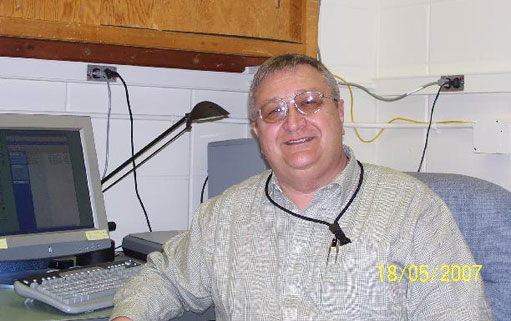
ATLAS e-News
23 February 2011
In memoriam - Vladimir Issakov
24 March 2009

Vladimir "Volodia" Issakov
Vladimir Issakov, who worked with the Yale group for many years, died quite suddenly
of a heart attack on the 2nd of March. He was a leading figure in many particle physics experiments. As an expert in electromagnetic calorimetry, he greatly advanced the Shashlyk technique – a technique of electromagnetic calorimetry wherein fibers of quartz or scintillator are embedded in a matrix in heavy material, and read out by photodetectors.
Vladimir was born on 25 May 1945 in Pavlovo, Gorky region, USSR. He was educated in Russia, receiving his PhD degree in Physics and Mathematics from the Institute for High Energy Physics, Protvino, Russia (IHEP). In his early career, Volodia, as he is known to his friends, participated in several experiments with IHEP at the Serpukhov U-70 proton accelerator in Russia. There he began to develop expertise in electromagnetic calorimetry working with thin gap optical spark chambers. The experiments studied many π p interactions and resulted in his being invited to the
Institute for Nuclear Research of the Russian Academy of Sciences, Moscow, Russia (INR) to become project manager for a series of experiments on rare decays in flight of π- and K-.
It was with that history that Volodia came to the United States and to Yale University to participate in an experiment to measure the branching ratios of rare K+ decays. He proposed, designed, and led the effort to build a novel 32-ton Shashlyk electromagnetic calorimeter. The resulting device met all the requirements of the experiment, for low cost, and led to the success of the measurements. He also led the effort to improve the energy and time resolution of the Shashlyk technique to a point that Shashlyk resolution is on a par with other calorimeters and must now be considered when designing any future experiment using electromagnetic calorimetry.
As an ATLAS collaborator, Volodia was the motivator of the ZDC design. The extremely high radiation field of the LHC provided a challenge for any detector design, but Volodia's Shashlyk design with pure quartz fiber readout yields a high radiation tolerance while maintaining good energy and time resolution. He was not only a clever and resourceful physicist, but a wonderful colleague. He had a warm sense of humor and an optimism that brought cohesion to his collaborations. Although he will not get to see the fruits of his labors at the LHC, his colleagues who reap the benefits of his work will remember fondly the man who was such an important part of our efforts.
Grigor AtoyanAndrei PoblaguevMichael Zeller |
Yale University |